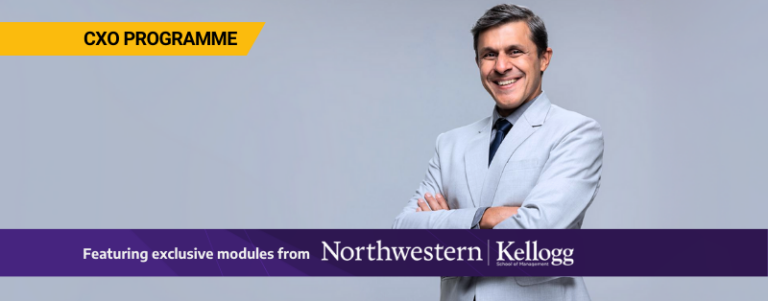What is Situational Leadership? How Does it Help Achieve Goals?

- What is Situational Leadership?
- Understanding the Situational Leadership® Model
- What are the Four Styles of Situational Leadership?
- What are Some Examples of When a Situational Leadership Style Might Be Best Used?
- What are the Qualities of a Situational Leader?
- Why is Situational Leadership Effective?
Ensuring employee engagement and offering support are complex challenges for modern leaders, especially because of the hybrid work culture. In these uncertain times, utilizing the Situational Leadership® model is one of the best ways to boost employee engagement. According to a 2022 Frontiers in Psychology study, situational leadership has a positive impact on job satisfaction and employee performance. Let’s understand the concept of situational leadership, its styles, qualities, and relevance for leaders in today’s context.
This blog discusses the following:
- What is Situational Leadership?
- Understanding the Situational Leadership® model
- What are the Four Styles of Situational Leadership?
- What are Some Examples of When a Situational Leadership Style Might Best be Used?
- What are the Qualities of a Situational Leader?
- Why is Situational Leadership Effective?
What is Situational Leadership?
The Situational Leadership® theory is a leadership philosophy that explains that there is no uniform leadership style for all situations. It is also called the Hersey-Blanchard theory or the contingent theory. Leaders have to change their style according to the situation. According to this theory, leaders perform two key roles: communication behavior and relationship behavior.
Task behavior refers to how leaders communicate with their team to direct the process of task accomplishment. Relationship behavior involves offering support and guidance to the team members. The theory explains how leaders can create a balance between both behaviors according to the team’s readiness level.
ALSO READ: The Golden Rule to Become a Leader
Understanding the Situational Leadership® Model
Leadership is defined as the ability to influence others. The degree of influence depends upon the situation, skill, availability of resources, employee motivation, and several other factors.
According to the Situational Leadership® model, one leadership style is not effective in all situations. Therefore, leaders need to tailor their leadership style and approach to the current situation. They need to assess the challenges and their team’s behavior and use the best approach to influence their behavior and overcome the challenges. The situational leadership model creates a matrix to determine the most appropriate leadership style according to the readiness level of their followers:
1. Low Readiness and Ability to Perform Tasks
The readiness level of the followers to perform a task is extremely low in the R1 situation. They lack the skills, knowledge, and guidance to perform a task.
2. Moderate Readiness But Inability to Perform Tasks
The R2 situation is where the followers are willing to complete a task. They have moderate task readiness but lack the skills to perform.
3. High Ability but Moderate Readiness
In the R3 situation, the followers have the ability and resources to perform a task. They, however, have moderate confidence or willingness to pull it off.
4. High Ability and High Readiness
The R4 situation is the most ideal among the four. Because the followers here are not only skilled but also have high readiness to perform tasks.
In all the different situations, the ability and willingness to perform tasks is different. Therefore, leaders have to modify their style as per the situation. For example, in R1, leaders need to adopt a coaching leadership style to train and support their followers. R4 requires a less supportive approach as the team members already have the expertise and willingness to complete tasks. The leader in an R4 situation needs to show faith and confidence in the team by delegating tasks.
Source: Project Cubicle
ALSO READ: What are the Roles and Responsibilities of a Leader
What are the Four Styles of Situational Leadership?
The Situational Leadership® theory describes the following different leadership styles to tackle the above-mentioned four situations:
1. Telling (S1)
This situational leadership style is appropriate for R1 because the team members are both inexperienced and unsure. Leaders tell the team what, why, how, and when to perform a task. They give clear instructions to the team and support the members in achieving their tasks. This situational leadership style also involves actions like telling, supporting, guiding, or directing the team to perform better.
Leaders need to create a healthy boundary in this situation by providing only necessary support. Otherwise, it might lead to micromanagement, making team members feel insecure.
2. Selling (S2)
Leaders use the selling or persuading approach in R2 when the team shows some willingness but needs support to achieve their goals. They offer guidance or direct the team to get things done. But at the same time, they also explain the rationale behind their decisions to persuade them. Providing clarifications behind business decisions encourages the team to perform better.
3. Participating (S3)
The participating leadership style is used in R3 situations where the followers are capable of performing tasks but lack confidence. The role of a leader in such a situation is to encourage their team to participate. The leader also collaborates with the team, shares their ideas, and supports them in decision-making. In essence, the team and leader come together and guide each other to gain efficiency.
4. Delegating (S4)
In the case of R4, leaders show faith in their team. Instead of directing or supporting them in decision-making, leaders delegate tasks to their teams. They hand over complete responsibility to the team but monitor the situation closely.
The Situational Leadership® theory also explains that teams follow a pattern of moving from R1 to R4 gradually. Ultimately, leaders need to be flexible with their approach. They need to analyze the readiness level of their team and tailor their behavior accordingly to influence their followers.
ALSO READ: How Management Styles Can Be Used To Maximize the Efficiency of Any Organization
What are Some Examples of When a Situational Leadership Style Might Be Best Used?
Situational leadership, as discussed above, refers to using different leadership styles and philosophies as per the situation. Here are two significant examples of situational leadership application:
- Adoption in the private sector: Private enterprises can leverage situational leadership to train new employees, offer guidance to teams, and tackle crisis management
- Healthcare sector: The healthcare sector undergoes constant reforms to improve healthcare services. It regularly deals with new challenges, guidelines, and medical policies. Situational leadership can thus be implemented in the healthcare sector to tailor leadership approaches as per the requirement.
What are the Qualities of a Situational Leader?
Situational leadership requires flexibility, resilience, and the ability to analyze situations. Let’s understand the top five qualities of a situational leader:
-
Adaptability
Flexibility and adaptability are the two strongest attributes of situational leadership style. They help leaders change their leadership approach as per their team’s behavior and readiness to perform, boosting team efficiency.
-
Empathy
Situational leaders must have empathy to guide and support their team. They need to understand the reasons for their team’s non-readiness, offer support, and encourage the team to perform better.
-
Communication Skills
Just like any other leadership style, excellent communication is the backbone of the situational leadership style. It helps leaders understand and assess their team members’ needs and determine the best leadership approach. Active listening and communication helps build trust, making it easier for leaders to influence their teams. Effective communication also helps in resolving conflicts.
-
Self-Awareness
Situational leaders have to be self-aware to understand their strengths and weaknesses. They must analyze the current situation, and modify their situational leadership style accordingly. Self-awareness helps leaders in effective decision-making, aiding them to connect better with their teams.
-
Problem-Solving
It is essential for situational leaders to be excellent at solving problems. This trait helps them direct their teams to do better. Problem-solving skills also allow situational leaders to collaborate with their team members and make sound business decisions.
ALSO READ: 20 Leadership Qualities That Makes You A Good Leader
Why is Situational Leadership Effective?
Situational leadership plays a vital role in managing workplace crises by blending leadership styles such as autocratic and transformational. According to the theory, no leadership style is the best for all situations. Leaders have to analyze the situation and choose the best style to support their team and achieve goals. According to a 2023 study on the most effective leadership style in the Indian startup sector, situational leadership is most effective in a complex business environment. It is the case especially in startups because as they grow, they face financial, managerial, and business challenges. Thus, modifying leadership philosophies and approaches as per the need can help businesses navigate through uncertainty. The situational leadership style also enhances employee engagement and productivity by fostering trust between the leader and other team members.
ALSO READ: 8 Types of Leadership Styles and How to Choose Yours
To conclude, the global workforce industry has evolved significantly in the last few years. AI is replacing jobs, and there is an urgent need to upskill to seek more value and flexibility at work. This has led to a complex business environment because of uncertainty. It has made it difficult for leaders to align organizational goals with their team members’ personal goals. Situational leadership is extremely beneficial since it enables leaders to analyze the situation and adapt their leadership approach accordingly. Emeritus’ online leadership courses help professionals learn the latest leadership styles and skills and gain practical experience. Explore these courses and become an impactful leader today.
Write to us at content@emeritus.org














